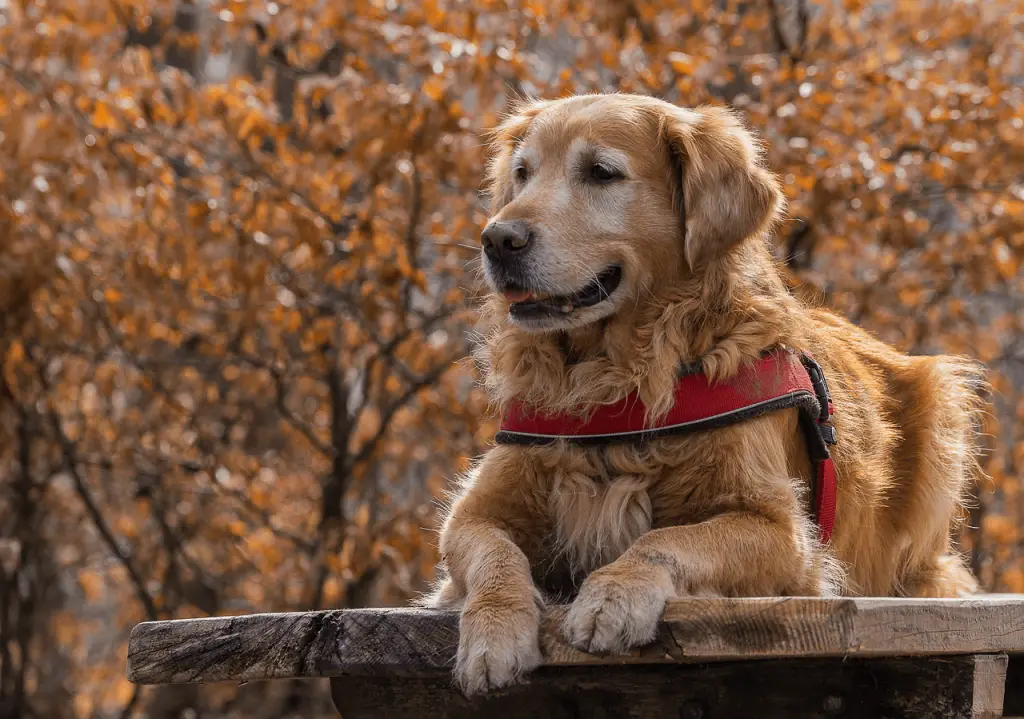Overview
Group: Sporting Group
AKC Breed Popularity Rank: No. 3 of 195
Height: Male – 23-24 inches; Female – 21.5-22.5 inches
Weight: Male – 65-75 lbs; Female – 55-65 lbs
Life Span: 10-12 years
Temperament: Friendly and lovable; Outgoing; Devoted
For those who are unfamiliar with dog breeds, the Golden Retriever is often mistaken for the Labrador Retriever (and vice versa), not knowing that it is a different breed altogether. The reason for the mistaken identity is that, at first glance, they seem to look almost the same. More importantly, they also share the same temperament. Like the Lab, the Golden Retriever is a joyful, affectionate, and trustworthy dog that is very eager to please its owner.
History
Unlike the Lab which originated from Newfoundland in Canada, the Golden Retriever was developed by Dudley Marjoribanks, the first Lord Tweedmouth of Scotland. This Scottish gundog was crossed from the lord’s “Yellow Retriever” and the now extinct Tweed Water Spaniel, with a little bit of Irish Setter and Bloodhound genes mixed in.
The Golden made its debut appearance in a 1908 British dog show. It was also around that time that the breed made its way to the U.S. via Canada. While sport hunters in those early years loved the dog’s hunting skills, most dog lovers appreciated its beauty and athleticism, and particularly its kindly temperament.
Some famous Goldens include former U.S. President Gerald Ford’s dog, Liberty. Many Goldens made their way into TV and film, such as Brandon from the TV series Punky Brewster and Buddy from the Air Bud movie.
General Appearance
The Golden Retriever is a medium-sized, sturdy and muscular dog, same as the Labrador.
One of the ways by which you can distinguish a Golden from a Lab is by taking a good look at its coat. Unlike the Lab which has a dense, short and straight coat, the Golden’s coat is longer, wavier, and more lustrous, with heavy fur feathering on the front legs, underbody, chest, and the backs of the thighs. Coat colors that are acceptable to the AKC are various shades of gold and cream. Another distinguishing feature is that the Golden does not have an “otter tail” like the Lab. Instead, its tail is long and feathery, and wags merrily.
Like the Lab, the Golden Retriever’s eyes show kindness and intelligence, also made evident through its sweet temperament, which makes them ideal dogs for kids.
Nutrition
A Golden Retriever should be given high quality dog food that is suitable to its age (puppy, adult, senior). The recommended amount is 2-3 cups of dog food daily, divided into two feedings. Because the Golden is prone to becoming overweight, monitor its caloric intake and make sure that dog treats are given in moderation, especially during training. Avoid giving the Golden table scraps, such as cooked bones and high fat foods.
Grooming
Golden Retrievers are heavy shedders, especially during spring and fall. Brush out dead hair to prevent tangles and keep the coat lustrous using a slicker brush twice a week. Give your Golden a bath once a week, but make sure that you dry its coat thoroughly first before brushing. Give their nails a good trimming once or twice a month. To prevent tartar and bacteria build up, brush your Golden’s teeth daily, or at least two to three times a week. Always check and clean its ears to prevent infection.
Exercise
Being an active, energetic dog, the Golden Retriever needs 20-30 minutes of vigorous exercise two times a day. This will help prevent frustration and undesirable behavior developing in the dog because of its inability to release pent up energy.
You can take your dog on field trials – Goldens excel in obedience, tracking, and agility sports – hiking, and hunting trips.
Training
Goldens should begin training and socialization classes when they are still puppies. Exposing them to their owners and their families and friends, as well as various situations that they might encounter in their homes will help them to grow up into well-mannered and well-adjusted pets. Obedience training is particularly vital to strengthen the bond between the dog and its owner.
Health
Owners of Golden Retrievers should be mindful of their dog’s health. Get a health clearance from the breeder to ensure that your dog does not have heritable conditions, like hip and elbow dysplasia and von Willebrand’s disease. Watch out for eye conditions, like cataracts and progressive retinal atrophy. The Golden may also develop a heart condition known as subvalvular aortic stenosis.
Costs
The average cost of a purebred Golden puppy is $800 but can go as high as $9,000. You can adopt a Golden at a shelter for $50 to $300. Factor in grooming, training, and medical costs, you may find yourself spending between $14,480 and $15,782.
However, same as the Lab, a Golden Retriever is a great investment if you are looking for a fine, devoted dog for the whole family.
SOURCES:
The average cost of a purebred Golden puppy is $800 but can go as high as $9,000. You can adopt a Golden at a shelter for $50 to $300. Factor in grooming, training, and medical costs, you may find yourself spending between $14,480 and $15,782.
However, same as the Lab, a Golden Retriever is a great investment if you are looking for a fine, devoted dog for the whole family.
SOURCES:
1) Golden Retriever https://www.akc.org/dog-breeds/golden-retriever/
2) Famous Members of Golden Retriever Breed https://ilovemygoldenretriever.com/famous-members-of-golden-retriever-breed/
3) Golden Retriever https://dogtime.com/dog-breeds/golden-retriever#/slide/1
4) Golden Retriever Puppies for Sale https://www.nextdaypets.com/Golden-Retriever.htm
5) Golden Retriever Price https://thehappypuppysite.com/golden-retriever-price/


